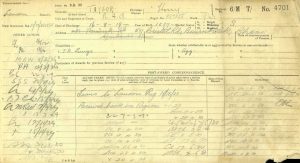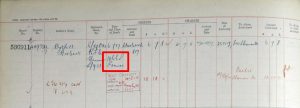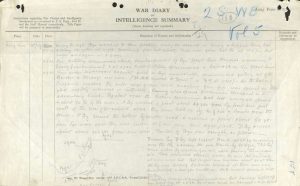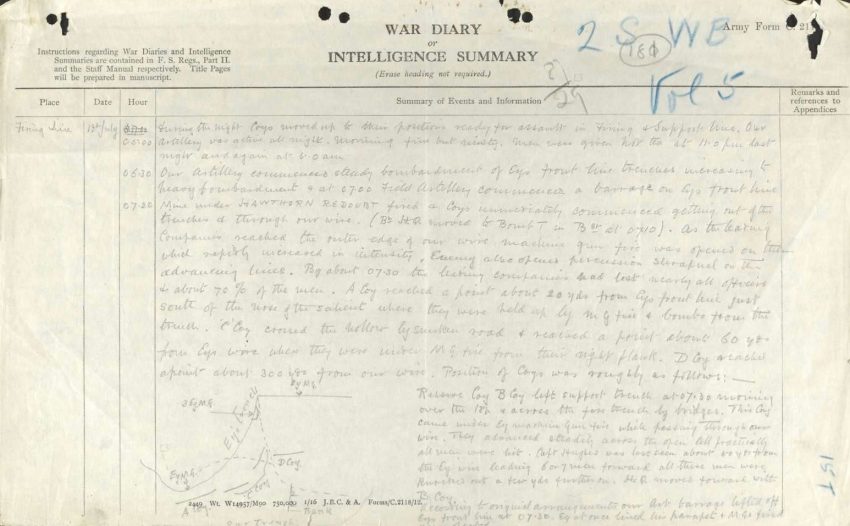In our second instalment of Researching British WWI Ancestors, Forces War Records (FWR) Military Genealogist Simon Pearce delves deeper into the collections available to our subscribers.
Part I of my blog focused on getting started with your WWI research. In this edition, I will spotlight more advanced military collections available to our FWR community to help you learn more about your military ancestors and their wartime experiences. These fascinating collections could help you discover new details and add further context to your ancestor’s military service, taking your research to the next level.
Pension Ledgers and Index Cards
Our WWI Pension Ledgers and Index Cards collection is of great value to military genealogists, particularly if your ancestor’s service record was destroyed.
The collection provides details of pension claims made by military personnel or their dependents following the end of WWI. Pensions were paid out, under certain conditions, to personnel or their dependents if they were wounded or contracted an illness or if they died in service.
The cards relate to all three branches of the armed forces, the British Army, the Royal Navy and the Royal Air Force, and the Merchant Navy. Our female ancestors also feature in the collection, including nurses who served with units such as the Red Cross Voluntary Aid Detachment or Queen Alexandra’s Imperial Military Nursing Service.
There are different variations of cards available in the collection, with some offering more detail than others. Aside from confirming that an ancestor received a pension, the collection can act as a valuable substitute for a service record, offering information not found on other military records, like a medal card, for example.
Clues such as a service person’s age, next of kin and home address can help you identify a military ancestor more accurately. Suppose you are researching an ancestor with a common name or know little or no information about their military service; these additional clues could help you make a breakthrough in your research and open up new lines of inquiry. In addition, references to a person’s cause of death or the reason for their pension offers valuable contextual information.

FWR Tip: Always check the back of the card for additional information.
Soldiers’ Effects Records
Another collection worth consulting when researching a British Army casualty of WWI is the Registers of Soldiers’ Effects.
Despite the title, these are not records of a soldier’s possessions. Instead, they relate to any money or war gratuities owed to the next of kin of a soldier who died in service.
In addition to the soldier’s next of kin, basic military details are provided. Entries for casualties occurring in the early stages of the war usually contain the soldier’s place of birth, enlistment date and trade. This is, however, another valuable resource for researchers whose ancestors’ service records have not survived. Once again, the presence of a soldier’s next of kin within the records allows you to make a positive connection to your ancestor, which may not have been possible in other military collections.
An interesting feature of this collection is the entries where a specific location of death is recorded. You may be aware that your ancestor died of wounds, for example. Occasionally, their entry in the Soldiers Effects Records will detail where they died of wounds, such as a specific hospital or Casualty Clearing Station, or while a prisoner of war. This information may not be recorded anywhere else and represents an opportunity to add new and revealing information to the timeline of your ancestor’s military service.

FWR Tip: Entries for officers spread across two pages.
War Diaries
One of the most popular questions I am asked is: ‘how do I discover what my ancestor did during WWI’? The desire to learn more about our ancestors’ wartime experiences is a significant reason why many of us begin military genealogy.
Service records and medal collections are crucial for providing key facts about our ancestors’ service. But if you want to learn what your ancestor was doing on a certain date during their wartime service, you need to turn your attention to the British Army war diaries. The diaries provide an unparalleled day-to-day insight into the activities of a battalion or unit during the war. From training to trench life to encounters with the enemy, the war diaries have it covered. If you’re a Forces War Records subscriber, you’ll have access to the WWI Western Front and Gallipoli war diaries whenever you need them.
Packed with information, you can browse months or years’ worth of diary entries to build a picture of your ancestor’s wartime service. Alternatively, you can jump to specific dates in the diaries. The latter is an option for anyone interested in a particular event in their ancestor’s wartime service, like the date they were wounded, killed in action, taken prisoner or awarded for bravery.
The diaries regularly name officers, but specific references to other ranks are much more scarce. Content varies, but a soldier in the ranks might be named at the end of the month when gallantry awards are listed.

FWR Tip: Always check the appendices at the end of each month, which often contain maps and detailed reports, building on the entries in the main diary.
Researching British WWI ancestors – prisoners of war
Around 192,000 British and Commonwealth personnel were taken prisoner during WWI. Our ICRC Cards; Index of Prison of War Camp Register Entries, 1914-1918, can help you discover if your ancestor was taken prisoner during WWI. Transcribed from the International Committee of the Red Cross Archives in Geneva, Switzerland, entries provide basic military details like the person’s name, rank, number and regiment, and sometimes their year of birth to help you identify them in the collection. The prisoner’s date and place of capture are also recorded, and where they were incarcerated, adding further detail to their wartime story.
There are many collections available on Forces War Records to help you learn more about your military ancestors. You can view all our records via the Browse tab, with options available to narrow the collections by country, theatre of war or service branch.
We’re always here for you if you need help or advice with your research. Why not follow us on Facebook and submit a question to one of our monthly military genealogy Q&As? You can also send a query via the Document Expert section of our website.
Sources
The National Archives, British and Commonwealth prisoners of the First World War and previous wars, accessed March 2024.


